
The Floquet-Boulanger duel, L’Illustration, July 21,1888

Almost everyone has heard the expression, at one time or another, that “the best defense is a good offense.” Today, this adage has made its way into the modern consciousness, and is often quoted in books on the martial arts and “practical” self-defense, of which the following is only one recent example:
“In realistic combat situations, the best defense is a good offense.” [1]
Although the origins of this expression are uncertain, since the 1930s, the quote has mainly been attributed to the world heavyweight boxing champion Jack Dempsey. [2] However, the statement can be found in print as far back as the nineteenth century [3], and some authors have gone so far as to attribute the sentiment to George Washington, who wrote in 1799,
“Make them believe, that offensive operations, often times, are the surest, if not the only (in some cases) means of defence.” [4]
The sentiment may well seem to hold true—at least to a degree—in “combat sports” such as modern boxing, MMA, Olympic sport fencing, as well as (ostensible) martial arts tournaments involving Karate, Taekwondo, Kendo, historical Western/European martial arts, and other contests simulating a combat with glove-covered fists or blunted weapons, wherein the body is able to absorb blow after blow, and wherein the life of the participant is not in serious danger, should he or she be hit. Likewise, as George Washington suggests, aspects of the philosophy may also hold true in the context of military operations, wherein the lives of large numbers of individual soldiers may be sacrificed en masse for the sake of a winning strategy.
However, the idea of “emphasizing offense over defense” becomes extremely problematic when applied to the martial arts, or to individual armed combat. Except in the rarest of cases, the human individual, as a holistic being, does not have the luxury of sacrificing a limb or a major organ in the pursuit of victory—that is, if they wish to maintain the ability to defend themselves, and to be of full service to their family, to their nation, to humanity, and to themselves. Nor, of course, does the average martial artist or combatant have the luxury of sacrificing their own life during the course of a fight.
The truth of this fact has been proven time and again in countless instances throughout history, and, as shall be shown, has been eloquently opined on by some of the greatest martial artists who ever lived.
The aim of this article is not to disparage offensive tactics or techniques (which, indeed, are an integral component of any martial art), but rather, to put them in their proper context by illustrating the dangers that can arise when giving such tactics and techniques priority over one’s own defense and personal safety.
The Floquet-Boulanger Duel
An excellent real-life example that illustrates the perils of emphasizing offense over defense is the Floquet-Boulanger duel, in part because the episode is so well-documented.
To briefly summarize this incident, which occurred in 1888: the French General Georges Boulanger had publicly quarreled with, and insulted, Prime Minister Charles Floquet, who was ten years Boulanger’s senior. Floquet promptly challenged the General to a duel with swords. The latter accepted, and the two promptly arranged a meeting on an estate at Neuilly-sur-Seine, frequently used as a dueling ground, and only a short distance from Paris.

General Georges Boulanger and Prime Minister Charles Floquet
Contemporaries noted that General Boulanger was expected to have the advantage due to his youth, vigor, and considerable military experience. However, of the ensuing combat, a French correspondent to the New York Times reported that
“General Boulanger tried hard to kill M. Floquet, flinging himself upon him again and again. He made a lunge at M. Floquet’s left breast, but only slightly touched the mark. Gen. Boulanger then received a wound in the throat, which put an end to the encounter. The wound was a severe one…”[5]

Floquet defeats Boulanger, as pictured in the Illustrated London News
A similar account in the Illustrated London News clarified:
“Boulanger, who had rushed wildly at his opponent, received a serious wound; M. Floquet had quietly raised his sword, and Boulanger, stumbling forward, got it in his throat. The seconds, by common consent, stated that General Boulanger’s wound made it impossible for him to continue to fight.” [6]

The final action of the duel, as pictured on the cover of Le Monde Illustre
A more detailed French account, appearing in L’Univers Illustré, noted that Boulanger attacked Floquet immediately at the outset of the duel with “extraordinary ardor,” and continued to do so multiple times. However, rather than impaling himself, Boulanger was defeated by a simple parry-riposte:
“M. Floquet parried, and with a quick riposte, hit his adversary in the upper anterior part of the neck. The blade penetrated several centimeters into the tissue; the result was very abundant bleeding.” [7]
Whatever the precise manner of Boulanger’s defeat, the accounts were unanimous: the General had aggressively, passionately, and repeatedly attacked Floquet, who had remained cool and on the defensive.
Further insight was provided by Colonel Thomas H. Monstery (1824-1901), a fencing master who had served under twelve flags, and had survived participation in somewhere between 53 and 61 duels [8]. Consequently, during the late nineteenth century, he became regarded by the American press as an authority on dueling. When asked about the Floquet-Boulanger duel, Monstery replied:
“Gen. Boulanger…from what I learn by the papers, brought about his defeat by his lack of coolness and consequent fury of attack. He rushed blindly on his foe, losing all sight of prudence and skill in the desire to inflict injury. For an expert swordsman to overcome such an attack is an easy matter. He has only to wait coolly for his antagonist to leave an opening and then sail in . . . Between you and me, I think Boulanger was in great luck. A man who employs the tactics he did in the presence of a skillful swordsman will be killed in nine cases out of ten.” [9]

Colonel Thomas H. Monstery
Monstery’s views on mindset and tactics are by no means unique, and have been echoed numerous times by some of the greatest martial arts masters of past centuries—from both Europe and Asia. In particular, masters of the past have warned against attempting to overcome an adversary through fury, passion, and aggression. For instance, in an addendum to Johann Liechtenauer’s Recital on the Longsword, a medieval author notes that a person who fences “wittily and without all wrath” will “seldom lose.” [10] Likewise, Don Jeronimo de Carranza (1539-1600), the founder of La Verdadera Destreza (the Spanish school of swordsmanship), stated in 1569:

Jeronimo de Carranza
“The vulgate, although he professes knowledge of swordsmanship, is easy to discover when in times of anger and conflict he forgets his professed skill and commits vulgarity in his manner and actions.” [11]
Nearly two-hundred years later, Zachary Wylde, in his treatise on the use of the smallsword, broadsword, quarterstaff, and wrestling, stated in 1711:
“Let not Passion, Fury, nor Choler, which are absolute Enemies to skill, in no Case prevail, if you do, it will destroy your Judgement.” [12]
Again, in the nineteenth century, Joseph Roland, fencing master of the Royal Military Academy at Woolwich, wrote,
“Being in a passion, [such swordsmen] are not masters of them themselves; and if the adversary is only cautious and cool, the passionate man will inevitably fall on the other’s sword.” [13]
Authors of treatises on dueling with sharp swords continued to express such sentiments up until the early twentieth century. In 1901, the Hungarian Army Cavalry-Lieutenant Zoltán Cseresnyés Fels-Eöry wrote in his book Safe Outcome of the Sabre Duel:
“If you want to survive a duel with sabres, you must first defeat your uncontrolled urges.” [14]
These statements are thrown into further light with knowledge that the very word “fencing,” used to encompass armed European martial arts for more than six-hundred years, comes from the word “defence”:
fencing (n.) mid-15c., “defending, act of protecting or keeping (something) in proper condition” (short for defencing) [15]
Likewise, throughout the vast number of fencing treatises and advertisements that existed in centuries past, instructors referred to fencing as the “noble science of defense,” the “true art of defence,” or simply “self-defense.” [16] As far as the very definition of Western swordsmanship is concerned, the emphasis has always been on defense, rather than offense.

Miyamoto Musashi, self-portrait in later years
Nor must it be thought that the sentiments expressed above were the domain of the West alone. Miyamoto Musashi (1584-1645), widely revered as one of the greatest Japanese swordsmen of all time, and a survivor of more than sixty duels and countless battles, noted in his Thirty-Five Instructions on Strategy:
“The mind should be neither solemn nor agitated, neither pensive nor fearful; it should be straight and ample. This is the state of mind that should be sought after…in this way you make your mind like water that reacts appropriately to shifting situations.” [17]
Likewise, in their notes on his teachings (Notes on Mind, Energy, and the Body in Strategy), Musashi’s disciples elaborated,
“It is important to place yourself in a state of calm and to work out your way of mastering your own mind and work on the manner in which your vital energy emanates from you…If you are capable of mastering your own mind by placing yourself in a state of calm, you will be able to see clearly what is happening in your opponent.” [18]

Plate from Art of the E’mei Spear
Martial arts masters from China—a region regarded by many as the original fount of the Eastern martial arts—also emphasized these principles, and expounded upon them in great detail. An early Qing dynasty treatise by Cheng Zhen Ru on the use of the spear devoted an entire chapter to “calmness” and another to “mind mastery,” stating:
“It is easy to use techniques, but difficult to gain control over one’s own mind…the flame in the heart must not burn. The four elements must be calm from within oneself.” [19]
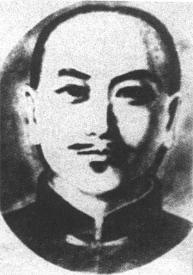
Li Yiyu (1832-1892)
The Bubishi, otherwise known as the 19th century “Karate Bible”, but with roots stretching back to 16th century China, stipulates that “the mind must be calm but alert,” and advises the practitioner to “remain calm when facing your opponent.” [20] In a classic Chinese treatise penned in 1881—said to contain much older techniques from centuries past—the boxing instructor Li Yiyu (1832–1892) condensed his martial principles into a “Five Word Formula,” the very first of which reads as follows:
“1. The mind is CALM. If your mind is not calm, it will not be focused, and each movement of your hands, be it forward or back, left or right, will not be in any definite direction. Therefore your mind should be calm…Over time, you will reach the point in which you can say ‘[the adversary] is under my control and I am not under his.'” [21]
Such wisdom is clearly universal, and extends to both East and West.
Boulanger’s Tactics
“Labour to parry well, rather than to hit at random, by too much ambition or heat of passion.” – A. Lonnergan, The Fencer’s Guide, 1771

General Boulanger
One might well ask what was going through Boulanger’s mind when he decided to use the tactics that he did during his duel with Floquet. Fortunately for us, we do not have to wonder.
Approximately three years after the combat, the following remarkable article appeared in the pages of the London Standard, recounting Boulanger’s visit to a fencing instructor only a few hours before the duel was scheduled to take place. According to this account,
“Before the meeting, the General, who had never fenced since his cadet days at St. Cyr, was persuaded to take a lesson from a famous swordsman. The moment he stood on guard his instructor saw that he knew nothing about fencing.
‘You don’t know how to parry,’ he said to the General.
‘No,’ was the reply; ‘I charge.’
‘Then you will spit yourself.’
‘Tant pis. I have never had time to learn the simplest parade [parry], and it would be absurd for me to try to fence in the regulation manner. I shall charge as I did just now.’
He had previously run himself on to his opponent’s sword exactly as, a few hours later, he fared with M. Floquet.” [22]

Representation of Gen. Boulanger “leading the charge”
Twenty-six years earlier, the French swordsman Baron de Bazancourt (1810–1865), in his 1862 Secrets of the Sword, had recounted a similar conversation—one that the General would have done well to learn from:
“May I ask one more question?” said one of my friends. “I have often heard it said that if you don’t know much about fencing the best thing to do is, as soon as you come on guard, to make a sudden rush at the other man before he has time to collect himself.”
“Well,” I replied, “if you wish to make sure of being incurably spitted, that is the most infallible way to set about it.” [23]
Given the timing of this publication, Bazancourt may well have been thinking of the duel between Dillon and the Duc de Gramont-Caderousse, which also occurred in 1862. Dillon’s second, the more experienced Colonel de Noé, had advised him to use defensive tactics, by first commencing with a false attack, and then hitting his adversary with a counter parry-riposte. However, Noé recounted,
“Dillon followed my advice at first, but he made a flourish. The Duc had then only to thrust and poor Dillon fell a corpse.”
The Daily Telegraph observed,
“Dillon, like many other inexperienced fencers, relied on his mere physical strength and on the impetuosity of his assault, and…the Duke, hard pressed by a furious albeit clumsy foe, was forced to thrust where he could, and to thrust home.” [24]
The fact is that the consequences of such tactics could be disastrous, especially in a combat with sharp weapons.

Aftermath of the Floquet-Boulanger duel, after an engraving by Paul Destez, L’Univers Illustre, 1888
The following details of General Boulanger’s injuries were related by Dr. Labbé, the well-known surgeon who attended him immediately following the duel, and vividly illustrate the very serious consequences that could result from such tactics—even in duels with the relatively light, thin 19th century dueling sword:
“The point of the sword…[penetrated] on the right side, about the level of the hyoid bone. At this moment, the General having bent down, the point of the sword was directed downwards, wounding the anterior and superficial jugular vein, which caused profuse haemorrhage, which, however, was soon arrested, and the wound was dressed antiseptically. There was also some effusion of blood about the wound. It is probable that the phrenic nerve was also wounded, as immediately afterwards serious trouble of the respiration, accompanied with violent pains about the level of the insertion of the diaphragm, occurred. These were followed by several attacks of oppression. During the night following the day of the duel the patient suffered so intensely from pain in the chest, so agitated, that recourse was had to a subcutaneous injection of morphia, which relieved the pain and quieted him. Thirty-six hours afterwards emphysema made its appearance on the right side of the neck, which would prove that the point of the sword had penetrated into the larynx, or trachea… Till now the general reaction has been moderate, and the wound has healed up; but, fearing a lung complication, Dr. Potain was yesterday called in consultation, and this gentleman detected a slight congestion at the base of the right lung. The bulletin of this morning states that the patient is doing as well as can be expected under the circumstances, but the four doctors who are in attendance are reserved as to the issue of the case, as it is impossible to foresee what complications may arise.” [25]
Following his recovery, Boulanger’s conduct during the duel was much criticized. His political career dwindled, and he later spent his life in exile in Belgium and Great Britain. As Monstery suggested, however, Boulanger was still in “great luck”–he had survived the duel. Not all swordsmen who tried the same approach fared so well.
In 1898, a duel between Signor Cavallotti and Count Macola took place near Rome, in the villa of the Comtesse Cellere, and was captured in a series of photographs. The chosen weapons were sabers. Cavallotti was on his thirty-third duel, and Macola his sixteenth. According to a journalistic account, Cavallotti
“strongly attacked his opponent, his head bent forward, and attempted to deliver cuts to the flank. M. Macola broke the attack, extending his arm. During the second engagement, the same tactics were used by both sides.”

Photograph of the duel between Cavallotti (on right) and Macola (on left)
The duel ended when,
In the third and final engagement, during a furious charge by M. Cavallotti, M. Macola, his point always in line, stopped his opponent on the mouth. The point penetrated and immediately caused an abundant hemorrhage. The doctors attempted tracheotomy, in vain. Cavallotti died in their arms, without being able to utter a word.” [26]

The fatal outcome of the Cavallotti-Macola duel.
Three years later, Fels-Eöry would appropriately write in his Safe Outcome of the Sabre Duel:
“There is no more dangerous manner of attack than when one charges, full tilt, at his adversary, to which we can truly say, that only his enemy’s sword will be capable of arresting him, onto which he will fall.” [27]
The Cavallotti-Macola duel is yet another vivid example of the disastrous consequences that can befall a martial artist when offense is given greater priority over defense during an actual combative encounter with sharp weapons.
Problems in Training
“The same Awe ought to be paid to the Foil, as to the Sword, whose Representative it surely is. Nothing ought to be attempted with the one, that would be feared with the other…” – Captain John Godfrey, 1747
To return, briefly, to the Floquet-Boulanger duel: this particular combat raises another issue that is relevant to all martial artists: namely, the disparity between the conditions of training and that of actual combat.
As noted in the Standard’s account, during his duel, Boulanger had resorted to the same aggressive tactics that had actually failed him during training:
“[Boulanger] had previously run himself on to his [fencing instructor’s] sword exactly as, a few hours later, he fared with M. Floquet.” [28]
As recounted previously, Boulanger charged his fencing master, was promptly hit with a blunt training weapon, but, ignoring the ramifications and feedback received, decided that he would continue to use those same tactics in actual combat. Essentially he neglected to treat his training weapon seriously (failing to envision what the same outcome would be with a sharp weapon), and neglected to modify his tactics accordingly. The history of fencing is filled with similar accounts, wherein aspiring swordsmen resorted to strategies, previously used with foils or blunted swords, which became fatal to themselves when used with sharp weapons.
 During the 1870s, Colonel Monstery, himself a veteran of dozens of duels, observed such a trend in the American fencing world, in which contestants emphasized offense over defense in the attempt to “score a hit.” Monstery derisively referred to such contests as “poker games”—that is to say, “jabbing with the blade” formed the chief method of attack, while the defense was ignored. [29] Such tactics often resulted in double or simultaneous hits to the two combatants. Monstery publicly warned that if such practices were to persist, “it is only a matter of time for [fencers] to become proficient in this sort of cheating, and to ruin the art of fencing in the United States for ever.” He explained,
During the 1870s, Colonel Monstery, himself a veteran of dozens of duels, observed such a trend in the American fencing world, in which contestants emphasized offense over defense in the attempt to “score a hit.” Monstery derisively referred to such contests as “poker games”—that is to say, “jabbing with the blade” formed the chief method of attack, while the defense was ignored. [29] Such tactics often resulted in double or simultaneous hits to the two combatants. Monstery publicly warned that if such practices were to persist, “it is only a matter of time for [fencers] to become proficient in this sort of cheating, and to ruin the art of fencing in the United States for ever.” He explained,
“There is only one safe practice to follow in foil fencing. This is to imitate as closely as possible the contest with the naked point. No one but a maniac would take thrust for thrust from an adversary with sharp points, unless, indeed, he were a very inferior swordsman, who wished to take some sort of revenge by piercing his enemy’s shoulder, at the price of a mortal wound through his own lungs…The consequences of simultaneous blows with sabres cannot fail to be disastrous to both parties. In an actual sabre duel, their delivery would require two maniacs instead of one.” [30]
More than three hundred years earlier, the German fencer Joachim Meÿer had expressed exactly the same sentiment in his treatise on the longsword:
“It is no use to be overly aggressive with striking, or to cut in at the same time against [the adversary’s] strokes recklessly as if with closed eyes, for this resembles not combat but rather a mindless peasants’ brawl.” [31]

Plate from manuscript edition of Joachim Meyer’s fencing treatise
During the late medieval era, around 1409, the fencing master Fiore de’i Liberi (1340s-1420s) noted the disparities between contesting with blunt weapons and engaging in actual combat with sharps, and described how contestants modified their tactics accordingly:
“Also I, Fiore, told my students who had to fight in the barriers that fighting in the barriers is much and much less dangerous than fighting with cut and thrust swords in zuparello darmare (arming jacket) because to the one who plays with sharp swords, failing just one cover gives him death. While the one who fights in the barriers and is well armoured, can be given a lot of hits, but still he can win the battle. Also there is another fact: that rarely someone dies because he gets hit. Thus I can say that I would rather fight three times in the barriers than just once with sharp swords, as I said above.” [32]
Fiore’s comments certainly echo Monstery’s, and prove that this issue is indeed an old one.
Martial Art or Martial Game?
In 1691, fencing master William Hope (1660-1724) observed similar mistakes among swordsmen training with blunted weapons. Although Hope was somewhat coy about his own combat experience with sharps [33], his books on the art of fencing give great insight into the techniques and approaches of his era, and echo many of the martial points of other masters which we will examine. In his writings, Hope speaks of the “assault,” later defined as “the exercise with blunt weapons, representing in every respect a combat with sharps, in which we execute at will all the maneuvers of the fencing lessons.” However, in his observations, Hope makes it clear that not all participants were wont to treat the assault as a “combat with sharps”:
“When People Assault, it is commonly with Blunts, and when an Ignorant, who undervalueth the Art of the Sword, and trusteth all to his own Forewardness is desired by an Artist to shew his Natural Play, he very well considering that he can receive no prejudice by his being hit with a blunt fleuret [foil], Rusheth and Rambleth still forewards (let him receive never so many Thrusts) until he either hitteth the Artist with one of his Rambling Thrusts, or otherwise cometh so close, that the Artist must inclose with him, and he thinketh, if he hath given the Artist but one Thrust (although he himself should receive three or four in the time they are playing) that he hath carried the Day, and quite run down the Art of Fencing, whereas if they were either to play with Real Sharps, or with Fleurets having a quarter of an Inch of a point beyond the button, I make not the least doubt, but their rambling would be a little slower…” [34]

Such gamesters were variously referred to as “blunderers,” “ignorants,” “irregulars,” and “ferrailleurs.” Joseph Roland, who preferred the latter term, was unsparing in his criticism:
“Indeed, a man must be an idiot to call this fencing;——since, in a serious affair, he would, by such conduct, rush headlong on his own destruction.” [35]
Hope wastes no time in prescribing a solution for how to deal with such “ignorant” fencers:
“To prevent this inconveniency, if I were to play with an Ignorant for a Wager, I would play alwayes with pointed [sharp] Fleurets, and then in GOD’s Name let him Ramble his Belly full; For in that case I would know a way to come at him, which might perhaps cause him repent his Forewardness.” [36]
This sentiment of Hope’s would find further realization during the nineteenth century, when fencers practicing with the épée de combat (the dueling sword) adopted the point d’arrêt (“stopping point”), a one to three pronged point with small protruding spikes, which would typically cause pain to the fencer being hit, thus encouraging a more defensive mindset, and better preparing the fencer for actual combat. Although, during the twentieth century, the point d’arrêt was discarded by modern Olympic sport fencers along with the advent of electronic scoring apparatus, the point d’arrêt remains in use today among certain circles of classical fencing traditionalists. [37]

Various point d’arrets, 19th century. Source: benjaminarms.com
Despite such training methodologies, as well as numerous warnings, it is clear that many combatants (Boulanger being an obvious example) went on to use suicidal tactics in actual combat—either out of ignorance, lack of control, so-called “nerves,” or the fact that they had become used to pursuing such tactics while engaging safely with blunts. Thus, some authors and fencing masters wrote of the need to be prepared for such tactics applied to actual sharps, and to know how to fence accordingly. Fels-Eöry, in his Safe Outcome of the Sabre Duel, includes a section on “Advice For Utilizing Mental & Physical Powers,” in which he explains:
“…Every good and capable fencer should watch out for simultaneous cuts (doubles), which consistently result in the ugliest of cuts.
While fencing in assaults, we experience a lot of double-touches. These result either from real attacks occurring simultaneously, or from poorly utilized ripostes while defending.
But these double-touches occur even more frequently in dueling.
Not overcoming obsession, anger, and hatred: these manifest in forsaking all defense, and attacking one’s opponent wildly.
How easy it is, with calm parries and mindful demeanor, to disarm such opponents.” [38]

The Art of Manual Defence, 1799
These same issues can be observed in the historical development–and subsequent devolution–of Western boxing. Originally, in previous centuries, boxing had been practiced in Europe and America as a bare-knuckle martial art intended both for self-defense and the settling of disputes. It included a variety of techniques such as striking, grappling, and tripping, as well as defenses against head butting and eye gouging. The following passage, from Thomas Fewtrell’s Science of Manual Defence (1790), explicates the eighteenth century martial approach to boxing:
 “I wish it to be universally understood, that I recommend the practice of Sparring, as if in real action. No manoeuvres, no attitudes ought to be adopted, unless experimentally, but what would be introduced in an actual fight.” [39]
“I wish it to be universally understood, that I recommend the practice of Sparring, as if in real action. No manoeuvres, no attitudes ought to be adopted, unless experimentally, but what would be introduced in an actual fight.” [39]
The following technique, attributed to the celebrated fighter Daniel Mendoza, gives an idea of how eighteenth century bare-knuckle techniques differed from those that would later be used in modern boxing:
“A blow on the bridge of the nose with one of the large knuckles, if given either by striking straight, or striking the chopper, slits the nose from top to bottom.” [40]
Such techniques were not to last. By the late nineteenth century, the focus and objective of boxing had largely shifted to winning at gloved competition—even though the “art” was still often taught under the pretext of “self-defense.” The new sport of boxing gave rise to many changes—including a less conservative guard position (which relied on the use of large, padded gloves to shield the body and head), the use of a horizontal (rather than vertical) fist when striking, and a whole new host of techniques that were only effective when executed while wearing gloves. Colonel Monstery, in one of the last American treatises devoted to pure bare-knuckle boxing, describes (with derision) many such techniques—which he forbade at his academy, due to the fact that they would be useless or ineffective in an actual self-defense situation. Monstery catalogued these techniques as:
“1. Whipping; 2. Cutting; 3. Palming; 4. Round blows…” [41]
Monstery elaborates on the technique of “cutting”:
“Cutting is the common way of striking used by natural and unscientific boxers. If tried in a fight with the bare hands, it does not hurt like a true blow in the line of power, and it exposes the knuckles to injury in giving it. In glove sparring it is a malicious way of striking, as it forces aside the padding of the glove, and the blow comes with the edge of the hand, made harder by one fold of leather… Nevertheless, cutting is the most popular of all sorts of hitting in public sparring matches. A cut is a smart slap, and makes a loud noise, wherefore uninstructed audiences generally applaud a loud cut. A true blow, however heavy, makes no noise with the gloves, and is only noticed by its effects.” [42]

The “Right Hand Counter” in How to Box, 1882
Such techniques would go on to dominate the ever-evolving sport of modern boxing—derisively referred to as “sandbagging,” by one ageing veteran named William Madden. In 1885, another author explained that modern boxing had become
“the mere shadow and semblance of what it was formerly. Fifty years ago sparring with the gloves was regarded chiefly as a means to an end. The teacher of it instructed his pupil, not with a view of enabling him to use the glove prettily, but how to use his fist with most effect…Tthe far greater part of those who now take lessons do so purely with the desire of excelling in competitions with the gloves. Half the men who win the most honours and prizes in these competitions have never struck a blow with the bare fist since they were at school, and are little likely to do so till the day of their death. Accordingly, the spectators at an assault of arms, which is now the favourite occasion for a display of pugilistic science, no longer try to imagine what each blow would be like if the glove was off when it was delivered. They count the hits, not for what they represent, but for what they are; and thus often a loud-sounding slap with the half-open glove is applauded as a most telling stroke, while the neat ‘upper cut,’ which would tell ten times more heavily in a real battle, passes comparatively unnoticed and possibly unseen except by a few.” [43]
The preceding passages and examples make clear that when any martial art shifts its intent and focus from the reality of combat to the requirements of success in a game, it becomes watered down to become only a shadow of its former self; indeed, the notion that success in competition can be equated to success in an actual armed encounter, is, at best, delusional.
The Survivor of One Hundred Duels
“Now being Sixty-three Years of Age, [I] resolve never to Fight any more, but to Repent for my former Wickedness.” – Expert Sword-Man’s Companion, 1728
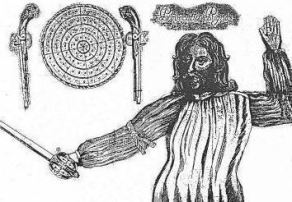
Portrait of Donald McBane
Another authority worth consulting on this issue is Donald McBane (1664-1730s), a highland Scot who took part in, by my estimation, close to one hundred duels. During the late seventeenth and early eighteenth century, McBane also served throughout much of Europe, participating in sixteen battles and fifty-two sieges. At age fifty he commenced fighting as a gladiator at the Bear Gardens (see this previous post for a description), where he fought thirty-seven prizes. At age sixty-three, McBane fought his last combat against a tough young Irishman named O’Bryan. McBane wounded his adversary seven times and broke his arm with a falchion. Thereafter McBane retired, and proceeded to write a memoir of his life, along with a detailed fencing treatise containing sections on the broadsword, smallsword, rapier, dagger, quarterstaff, spear, shield, double-handed ax, and knife. Surely, considering his immense experience, it is worth knowing what McBane had to say on the subject of offensive versus defensive mindset. In the pages of his treatise, McBane notes:
“Commonly those People who are unskill’d do thus, they think (and indeed with Reason) that they must not let you Attack, because they do not know how to Defend as they ought, for the Defencive part is the most difficult, therefore they drive on you with great Fury, (whils’t they have Strength) to put you out of your Play, but once that is over they are at your Mercy.”
McBane thus brings up an excellent point: a good defense is only possible with training and experience. It is for that very reason that unskilled swordsmen (referred to heretofore as “peasants” or “ignorants”) often resort to rash and overly aggressive tactics. Because they are lacking in defensive skill, choosing to constantly attack the adversary may seem like the only viable option.

Plate from McBane’s Expert Swordman’s Companion
McBane also indicates that inexperienced swordsmen were apt to use these tactics in actual combat with sharps, even at the risk of eventual suicide:
“Some men care not (at least don’t think of it, being only intent upon hitting their Adversary) if they receive a thrust, if it be not immediately mortal, so that they can but give one, but this may properly be called Rashness, or Fool Hardiness.”
Following is an account one of McBane’s many duels, in which he describes how he dealt with such wild aggressiveness. In the combat described below, McBane used a smallsword, while his adversary used a heavier broadsword:
“We drew, and after two or three turns, he making a great stroak at my leg, I slipped him, and Thrust him through the Body before he could recover himself; finding he was Wounded he struck furiously, and [I] giving way he fell forward; I seeing that, [thrust] him in the Leg, lest he should Run after me as before. I then commanded him to give me his Sword, which he did…”
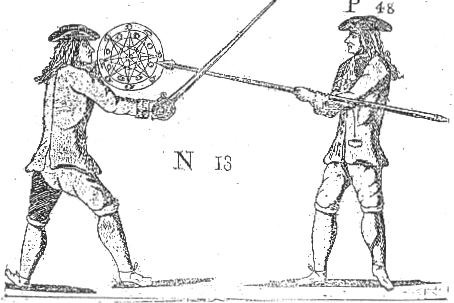
Plate from McBane’s treatise, showing the spear versus the sword and targe
In the pages of his treatise, McBane offers the following pertinent advice to the aspiring swordsman:
“Command your Temper and you will do much better, than if you give way to your Passion; and if you do Command it, and are Engaged with a Person who can not, you will have very much the Advantage of him, for his Passion will make him Play wild and wide, and consequently exposes himself to be Hit very often, wheras your thoughts not being in Hurry and Confusion, you may Defend your self with ease and judgement, and take an Advantage readily when ever you have a mind, you are the more capable of doing this, because your Strength, Mind and Spirit are not Spent or Exhausted.” [44]
A Samurai’s Perspective
An Eastern opinion on these issues may be found in the writings of Yamaoka Tesshu (1836-1888), a celebrated samurai of the Bakumatsu period. Initially a leader of ronin (masterless samurai), Tesshu would go on to join the personal guard of the Shogun, and would later help to negotiate a peace that would lead to the Meiji Restoration. During his youth he participated in thousands upon thousands of contests with some of the best swordsmen in Japan; at age twenty-four, he engaged in more than 1400 matches within a single week. In his letters, Tesshu addresses many points regarding the offensive and defensive mindsets, such as the following, written on Jan. 5, 1882, wherein he discusses notions of “True and False Swordsmanship”:

Yamaoka Tesshu
“When [swordsmen of other schools] confront an opponent, they immediately get agitated and attempt to defeat the other swordsman through a hot-blooded frontal attack. This is a grave mistake…when they can no longer depend on physical power due to age or ill-health, their inadequately formed techniques will fail them—it is as if they had not studied swordsmanship at all, a needless waste of effort. This is false swordsmanship. Students of the Way must awaken to this principle while training harder and harder.” [45]
In his book Lives of Master Swordsmen, author Makoto Sugawara noted that “Swordsmanship with bamboo swords…produced various techniques far removed from those required in fights with real swords.” [46] In another letter, penned in November of 1884, Tesshu describes, how, historically, such tactics became popularized:
“In the past the practice of swordsmanship in all schools was understood as practice with a wooden sword and no protective armor. However, about one hundred years ago most schools began to use helmets, gloves, and chest protectors. The reason for this change is that protective gear enables trainees to act with less inhibition and allows them to apply the techniques with full force—this is the sole advantage.”

Japanese soldiers fencing, ca. 1867-69 (National Library of New Zealand)
Tesshu provides further instruction that is relevant to any martial artist using arms:
“Contests conducted with a wooden sword and no armor are quite different from modern matches. In such contests, there is much more reserve because of the fear of injury; even a skilled swordsman is in danger of being struck.
In the case of contests conducted with a wooden sword and no armor, that condition alone necessitates a proper frame of mind. If one is not careful, it is very dangerous…hot-blooded swordsmen who rely on physical strength and attack as if they are still wearing protective gear will quickly be injured in a contest with wooden swords. Reflect upon this deeply and there will be no need to worry about injury.” [47]
Such disparities in combat conditions, and the confusion that could arise in matches conducted in protective armor, were thrown into sharp relief during the following episode from Tesshu’s career, involving a demonstration before the emperor. As the fencing was “rather subtle,” the emperor missed Tesshu’s decisive hit, prompting the following exchange:
“If we use live blades,” Tesshu said with perhaps a certain amount of sarcasm, “Your Majesty will be able to see when a point is scored.”
“Isn’t that dangerous?”
“No,” Tesshu assured him. “A slight cut will draw blood and Your Eminence will get a clear view of the action.”
The emperor declined. [48]
 Tesshu would go on to found the renowned Itto Shoden Muto Ryu school of swordsmanship –which he regarded not so much as a new creation, but rather as a “restoration” of old martial principles. His system was informed by fudo-shin, the “imperturbable mind” developed in the course of Zen training. In a letter about the martial arts, written in 1883, Tesshu elucidates on the profound concept of “substance,” which he defines as “the inner quiet of mind, free from individual failings.” Tesshu advises,
Tesshu would go on to found the renowned Itto Shoden Muto Ryu school of swordsmanship –which he regarded not so much as a new creation, but rather as a “restoration” of old martial principles. His system was informed by fudo-shin, the “imperturbable mind” developed in the course of Zen training. In a letter about the martial arts, written in 1883, Tesshu elucidates on the profound concept of “substance,” which he defines as “the inner quiet of mind, free from individual failings.” Tesshu advises,
“Recklessly striking and thrusting will not prevail over an opponent’s mind. The lack of calm in one’s own heart causes agitation to arise from all quarters, thus preventing mastery of the opponent. Know that this occurs for no other reason but one’s lack of substance. Depending on chance and lucky breaks to win never results in true victory. True attainment must be accomplished within the quiet of one’s mind.” [49]
The Art and Science of Defense
“It takes great courage and skill to take out an adversary with a calm mind. True masters establish a balance between their lives and their art to a degree that their lives become as much a product of the art as is the art a product of their lives…Diligent training cultivates an inner calm that enhances one’s instinctive ability to counter any offensive.” – Bubishi, 19th Century
We are already well-versed in examples of disastrous combats in which the participants neglected their defense in favor of a purely offensive strategy.
Now let us ask the reverse question: what happens when true defensive tactics are used by highly skilled combatants who have mastered their art and science?
One such example from history can be found in the career of Jean Louis Michel (1785 – 1865), widely considered to be among the greatest swordsmen of the nineteenth century, and perhaps of all time. As one author of the period described him,
“The founder of the modern French school of swordsmanship, and the greatest swordsman of his century, was a mulatto of San Domingo, that famous Jean Louis, who in one terrible succession of duels, occupying only forty minutes, killed or disabled thirteen master-fencers of that Italian army pressed into service by Napoleon for his Peninsular campaign.” [50]

Jean Louis and his fencing master, M. D’Erape. From L’Almanach Des Sports, 1899.
As referenced above, Jean Louis Michel’s most famous exploit as a swordsman was his participation in a “mass” regimental duel that took place near Madrid, Spain, in 1814. The incident began when French soldiers from the 32nd Regiment and Italian soldiers from the 1st Regiment quarreled, and a regimental duel was arranged. Within forty minutes, Jean-Louis killed or disabled thirteen Italian fencing masters in succession.
Examining the accounts of this combat, one is struck by the defensive, rather than offensive, tactics employed by Jean Louis. His first combat was fought with Giacomo Ferrari, a celebrated Florentine swordsman and fencing master of the First Regiment, and is described in the following passage:
“[Maestro Giacomo] Ferrari took the offensive, but Jean-Louis followed all [Ferrari’s] flourishes with a calm but intense attention; every time Ferrari tried to strike, his sword met steel. With a loud cry Ferrari jumped to the side and attempted an attack from below, but Jean-Louis parried the thrust and with a lightning riposte wounded Ferrari in the shoulder…”

Illustration of Jean Louis’s regimental duel, published in Le Pelerin, March 24, 1895
Following is a sample of passages describing Jean Louis’s subsequent encounters with additional fencing masters:
“Another adversary came at him. After a brief clash, Jean-Louis lunged and, while recovering, left his point in line. Rushing at him, his opponent was impaled. A second corpse lay at the French master’s feet.
“His third opponent, a taller man, attacked fiercely, with jumps and feints, but Jean-Louis’ point disappeared into his chest, and he fell unconscious.” [51]

Jean Louis Michel, in later years
Although this event is an excellent illustration of the successful employment of defensive tactics, it must be admitted that Jean-Louis’ opponents, though fencing masters, were nevertheless clearly outclassed by their adversary.
One may, then, well ask the question: what happens when two masters, equally matched, both employ such defensive tactics? We can find no better example than the Pini-Malato duel.

Baron Athos de San Malato, 1901
This “remarkable duel,” which lasted more than two and a half hours, took place in 1904, and was fought by Cavaliere Eugenio Pini and Baron Athos de San Malato. Both were among the most celebrated Italian fencing masters of their generation. Pini, a “phenomenon among fencers,” was a luminary of the Livornese school of fencing, while San Malato, according to fencing scholar Egerton Castle, had fought forty duels and was “one of the finest fencers in the world.” [52]
Journalists noted that the duel between the two, which was well-attended by more than sixty people, was one of the longest that had taken place in France, and was declared a “wonderful exhibition of science,” and an “exhibition of remarkable swordsmanship.” San Malato, according to one account, “made his attacks with the rapidity of lightning,” while Pini moved with “the spring of a panther.” Pini was wounded twice, about 1.5 hours into the duel, in the arm and on the nose, yet due to the minor nature of these wounds Pini insisted on continuing. More than one hour later, the combat was terminated when San Malato could no longer continue, due to his hand being excessively blistered by the hilt of his sword, thus rendering him at an unfair disadvantage. [53]


Maestro di Scherma Eugenio Pini
Though it may seem incredible to the average person that a duel with deadly weapons, fought in earnest, could last for a duration of several hours, the fact is that the Pini-Malato duel was not unique in this regard. Examples of other such combats are uncommon, but do exist. For instance, the renowned Italian fencing master Agesilao Greco fought a duel in Naples that lasted three hours [54]; in 1900, the Comte Albert de Dion and M. Saint-Alary fought a duel lasting more than an hour and a quarter [55], as did Benito Mussolini and Francisco Ciccotti in 1921 [56], as well as San Malato and M. Pons in 1881 [57]; in 1873, two French swordsmen fought a “skillful” duel in Pennsylvania that lasted more than one hour [58]; and in 1891, Count Bertazzoli and Signor Calderoni reportedly fought a rencontre with daggers in Lugo, Italy, that lasted forty-five minutes. [59] In his saber dueling treatise, Fels-Eöry explains the reasons for the disparity in lengths of duels:
“‘Two bad fencers’ clumsy and foolhardy cooperation always results in both getting gravely injured in a short amount of time.’ In this case it’s safe to say that the [outcome of the] duel is entrusted to luck… An abrupt end to a sabre-duel usually bespeaks two vehement parties who can’t fence; because a contest between two good fencers is generally arduously long…
A good fencer, against a bad one, will exert the greatest of care, which takes time. The weaker fencer will act in this knowledge, if he’s acting strategically and soundly, knowing that he will not get suddenly injured, and, knowing that, he will not suddenly injure.” [60]
The Pini-Malato duel was, of course, not your average combat, considering both the experience and extremely high skill of its two participants. Yet it serves as a model and example of what can be achieved at the higher levels of swordsmanship. Both Pini and Malato accomplished something remarkable—not by killing or seriously maiming the other, but by preserving their own lives; by both surviving a sword combat that lasted continuously for two and three-quarters of an hour.
Jack Dempsey’s Final Word
As much of the preceding article has been devoted to the subject of armed combat with potentially deadly weapons, let us now turn back to the subject of unarmed combat.
As stated previously, since the 1930s, modern texts have mainly attributed the quote “the best defense is a good offense” to the boxing heavyweight champion Jack Dempsey. It is, then, perhaps worth looking at what Dempsey himself actually had to say on the subject.

Jack Dempsey, circa 1935
In 1950, Dempsey published a treatise on his method of fighting, entitled Championship Fighting: Explosive Punching & Aggressive Defense. In Chapter 18, Dempsey addresses the issue at hand, and, in point of fact, does not say that the best defense is “a good offense.” Instead he states:
“The best defense in fighting is an aggressive defense.”
Clearly aware of the quote that had been falsely attributed to him, Dempsey proceeds to elucidate:
“Each defensive move must be accompanied by a counter-punch or be followed immediately by a counterpunch. And you cannot counter properly if you do not know how to punch. That does not mean that ‘a strong offense is the best defense.’ That overworked quotation may apply to other activities; but it does not apply to fighting. It does not apply when you’re pitted against an experienced opponent. You may have the best attack in the world; but if you’re an open target—if you’re a ‘clay pigeon’—you’ll likely get licked by the first experienced scrapper you tackle. YOU MUST HAVE A GOOD DEFENSE TO BE A WELL-ROUNDED FIGHTER. AND THE BEST DEFENSE IS AN AGGRESSIVE DEFENSE.” [61]
Conclusion
In perusing these many passages, some readers may be tempted to presume that the aim of this article is to suggest that offensive techniques and tactics have no place in the martial arts at all, or that when engaging in combat, one should simply do nothing but defend, and wait for the adversary to attack. However, that is absolutely not the case.
Combative situations can vary greatly. The tactical considerations, for instance, between a one-on-one combat scenario (such as a duel) and a battlefield, or a street encounter involving multiple opponents, may differ. Against an attacker with bare hands, one may also be willing to take greater offensive risks than one would in an encounter with an adversary wielding a knife or a potentially lethal weapon, wherein a single mistake can result in death or serious injury.
It should also be noted that all of the classic martial arts treatises quoted throughout this article contain offensive techniques as well as defensive. A prime example is Miyamoto Musashi, who frequently emphasizes the goal of ending the combat as quickly as possible—by striking first or attacking on the adversary’s preparation. Another example is Joseph Roland, fencing master of the Royal Military Academy, who warned, “To parry well is of great service, but it is nothing when you can do no more.” [62] We may also look again to Colonel Thomas Monstery, quoted heretofore several times. Monstery, in his treatise on both armed and unarmed methods of self-defense, writes of numerous offensive techniques—such as methods of attack, how to seize the initiative, how to take advantage of the adversary’s mistakes, and pressing the attack. For instance, in Chapter 10, in his “Advice on Street Encounters,” Monstery states:
“Always try to get in the first blow in a chance encounter. Parley with your enemy, and watch him till you see that you will be assaulted. Then give the first half-arm left-hand blow at his nerve system, and follow it with a full-arm right-hander at same place. I have generally found that I could finish such a battle in the one round.” [63]

Image from Monstery’s treatise.
How, then, are we to reconcile such advice with a mindset that emphasizes defense? The answer is, that even when attacking, one’s defense is still the primary consideration. Self-preservation, according to these authors, must always be kept in mind—even when executing offensive techniques or tactics. One can find many specific examples illustrating this throughout Monstery’s text. For instance, in his section on unarmed self-defense (bare-knuckle boxing), Monstery instructs:
“The left hand is the only one used in feinting. The feint with the right is too dangerous, as it takes away the guarding hand.” [64]
Likewise, in his section on armed self-defense with a stick or cane, Monstery instructs the pupil to

Cane defense in Monstery’s treatise.
“keep his hand high in striking, and to end his blow with the point lower than the hand in all high cuts. This is important, for two reasons: 1st. It makes a perfect blow, and compels the enemy to come to a perfect parry. 2nd. It leaves the hand in a position to guard against the return blow. If the hand is low, the return blow is sure to catch you, as the upper body and head are open. This makes the danger of striking at an enemy’s legs, as the hand must be low to strike at them.” [65]
Here, as in many other examples throughout his text, we can see that even when instructing in offensive techniques, Monstery is still giving great importance and consideration to one’s defense. Regarding offensive techniques applied to the sword, we can find similar admonitions in the treatise of Donald McBane, such as:
“Never over Lunge yourself, because one or other of your Feet may slip, and you can’t recover yourself to a Guard so soon as you should, and may be Hit in that time…” [66]
In their excellent article “The Medical Reality of Historical Wounds,” Dr. Richard Swinney and Scott Crawford examine numerous historical records of wounds resulting from combats with sharp weapons. One of the most obvious conclusions to be drawn from this article is the absolute unpredictability of how wounds can affect the victim. Included are recorded cases of combatants surviving (and remaining active following) halberd-chops to the head, sword-thrusts through the torso, severed jugular veins, and half-severed limbs. Swinney also notes, in his own experience as an ER physician, that
“I have met and treated countless individuals who remained capable of fighting or fleeing for minutes to hours after sustaining significant neck and chest injuries…I have met a number of patients with penetrating trauma to or through the heart who remained active and conscious for a minute or more after the injury, have made it to the emergency room alive, and with the benefit of modern surgery, have survived…it is clear that with adequate resolve, a person so wounded in a swordfight might attempt one or more desperate attacks in the moments immediately after sustaining such an ultimately fatal injury.”
The lesson to be drawn from these examples is clear: one cannot abandon the defense in the pursuit of dealing out a perceived “mortal” blow to the adversary, because there is very little guarantee that such a blow will actually be incapacitating, no matter how devastating it may at first appear. Swinney and Crawford thus conclude,
“The belief that a particular blow or thrust will instantly incapacitate an opponent is, more often than not, inaccurate or even silly. [Modern] historical fencing practices based on these erroneous assumptions weaken the art. Were swords still in earnest use, several common modern training practices might cost the swordsman limb or even life.” [67]
Conversely, there are many recorded examples in modern times in which combatants quickly became incapacitated (and even died) as a result of comparatively minor wounds to the arm or leg, in which the major veins and arteries reside. Thus, from this fact, one can draw a second lesson—that in an encounter with potentially lethal weapons, the defense can never be abandoned, because even apparently minor wounds to extremities can unpredictably result in incapacitation or death.
In conclusion, it is important to note that since time immemorial, martial artists have used the arena of contest to hone and test their abilities. Likewise, martial artists of both east and west have utilized various training methods to prepare themselves for live encounters with fully (or nearly fully) resisting adversaries. These include the concepts of sparring (as in the case of boxing and grappling), of the assault (as in the case of traditional fencing), and of gekken (as in the case of Japanese swordsmanship). To ensure that such practices remained safe, it was also necessary to develop protective equipment and specialized training weapons. These are all good, and indeed necessary, aspects to the healthy and effective practice of martial arts.
However, it has been shown that when such training methodologies, and contests, become the ends rather than the means—that is, when practitioners shift their intention from studying the martial arts systems of the past (whether Western or Eastern), to concentrate on success in tournaments or games, these arts lose their martial applicability and effectiveness. This as just as true today as it was in past centuries. It is of special significance that even in the context of a warlike culture such as the samurai of Japan, this phenomenon has still occurred.
We can do better than to end this article with the words of the Virginia fencing master Edward Blackwell, who wrote in 1734:
“The nicest Part of Fencing consists in the Defensive, and particularly against the Bold Ignorant…No Person ought ever to make any other Use of his Skill in Fencing, than in his own Defence; and then in such a cool and temperate Manner, as neither to be exasperated by Passion, or afraid to exert his judgment; then a Gentleman will reap the benefit of his instruction.” [68]
Or, in the words of Colonel Monstery,
“Above all things, never lose your presence of mind.” [69]
———
Special thanks to Levente Barckzy for his translations from the original Hungarian to English of Fels-Eöry’s “Safe Outcome of the Sabre-Duel” for this article.
[1] J. Barnes, Speed Training for Combat, Boxing, Martial Arts, and MMA, 2005. For other examples, see C. R. Jahn, Hardcore Self-Defense, 2002, Page 72; Mike Young, Martial Arts Techniques for Law Enforcement, 2014, Page 95; Kevin J. Robinson, S.M.A.R.T. Self-defense, 2003.
[2] “Dempsey believed the best defense was a murderous offense. For that reason he never bothered about protecting himself.” “The Othello of Boxing Faces His Inexorable Destiny With the Dignity of the Noble Moore,” by Frank Scullt in Esquire, Volume 4, 1935. p. 34. A simple search using “Google Books” reveals additional attributions to Dempsey throughout the 1940s and 1950s.
[3] The Christian Science Journal, 1883, Volume 88. p. 535 “It has been said that the best defense is a good offense…”
[4] George Washington to John Trumbull, June 25, 1799. http://founders.archives.gov/documents/Washington/06-04-02-0120
[5] New York Times, July 14, 1888.
[6] Illustrated London News, July 28, 1888. http://www.hadesign.co.uk/SSA/html/Duel.htm
[7] L’Univers Illustré, July 21, 1888.
[8] Thomas H. Monstery, Self-Defense for Gentlemen and Ladies (Berkeley: North Atlantic Books, 2015), 10.
[9] Ibid., p. 35.
[10] Thomas Stoeppler (translator), Nuremberg Hausbuch (MS 3227a), ca. 1389. http://wiktenauer.com/wiki/Other_Masters_(14th_Century)
[11] Don Jerónimo Sánchez de Carranza, Of the Philosophy of the arms, of its art and the Christian offense and defense, 1569.
[12] Zachary Wylde, The English Master of Defence, or, the Gentleman’s Al-a-mode Accomplish (York: John White, 1711).
[13] Joseph Roland, The Amateur of Fencing; or a treatise on the Art of Sword-Defence, theoretically and experimentally explained upon new principles; designed chiefly for persons who have only acquired a superficial knowledge of the subject (London: Printed for the author by W. Wilson, and sold at Egerton’s Military Library, 1809), 211.
[14] Zoltán Cseresnyés Fels-Eöry, A Kardpárbaj Veszélytelen Kimenetele És Annak Eshetségei [Safe Outcome of the Sabre-Duel], Budapest: 1901, 48. Translated here from the original Hungarian by Levente Barczy. Earlier (2015) English translation by Krisztina Nagy accessible at https://www.academia.edu/21543638/Safe_Outcome_of_the_Sabre-Duel
[15] http://www.etymonline.com/index.php?term=fence
[16] Ben Miller, Fencing in Colonial America and the Early Republic: 1620 – 1800 (Estafilade, 2009).
[17] Kenji Tokitsu, Miyamoto Musashi: His Life and Writings (Boston & London: Shambhala, 2004), 203.
[18] Ibid., 229.
[19] 程眞如 (Cheng Zhen Ru), Art of E’mei Spear (Translated and edited by Jack Chen), 13. http://www.chineselongsword.com/emeispear.shtml
[20] Patrick McCarthy, The Bible of Karate: Bubishi (Tokyo: Tuttle, 1995), 65.
[21] Li Yiyu, For Hao Weizhen to Cherish: 王宗岳太極拳論 後附小序並五字訣 “Wang Zongyue’s Taiji Boxing Treatise” Appended with my Preface & “Five-Word Formula,” [A treatise handwritten by Li Yiyu, presented to his student, Hao He (Weizhen), 1881] Translation by Paul Brennan, 2013. https://brennantranslation.wordpress.com/2013/05/25/the-taiji-classics/
[22] The Standard, October 1, 1891.
[23] Baron Cesar de Bazancourt, Secrets of the Sword (London: George Bell & Son, 1900), 219. [Translation of 1862 French original].
[24] Paul Kirchner, Dueling with the Sword and Pistol (Boulder: Paladin Press, 2004), 146-151.
[25] The Lancet, July 21, 1888.
[26] L’Almanach Des Sports, 1899. p. 213.
[27] Fels-Eöry, 86. Translated here from the original Hungarian by Levente Barczy.
[28] The Standard, October 1, 1891.
[29] Monstery’s comments were recounted in the New York Globe and Commercial Advertiser, April 2, 1904, p. 5.
[30] Monstery, Self-Defense for Gentlemen and Ladies, 180.
[31] Joachim Meyer, Jeffrey L. Forgeng, The Art of Combat: A German Martial Arts Treatise of 1570 (Palgrave Macmillan, 2006). Page?
[32] Robert Brooks, “DO YOU DO FULL-CONTACT?” – NOT UNLESS I WANT TO MAIM OR KILL YOU. http://www.hotspur.org.uk/blog/do-you-do-full-contact-no-not-unless-i-want-to-maim-or-kill-you
[33] Duels between gentlemen were private affairs, and were rarely spoken of (swordsmen-authors who were not gentlemen, such as Donald McBane, had no such qualms). In his A Vindication Of the True Art of Self-Defence, Hope explains: “[some might wonder] …how I come to give such positive directions for fighting, when it is not well known if I ever drew a sword in good earnest all my life? And if not, how I can know, so exactly as I pretend, the true rules so strictly to be made use of, when engaged for the life? To which I answer, that whether I have ever been engaged in good earnest or not, is none of the querists busines to know; neither will I let them at present into that matter: For I never much approved of being vain-glorious, especially where the victory is obtained, for the most part, at the expence, less or more, of the vanquisher: but if I have ever been engaged, when I might have prevented it, I am now very sensible that I ought not to have done it, according to the principles of true honour laid down in the fore-going Vindication; nothing but being attacked, and necessary self-defence, being what can vindicate any man’s running the hazard, as well as the sin, of taking away another man’s life. And if I have never fought, yet I have had the practice of near 50 years with foils…” William Hope, A Vindication Of the True Art of Self-Defence. London, 1729.
[34] William Hope, The Sword Man’s Vade Mecum (Edinburgh: John Reid, 1691).
[35] Roland, 198.
[36] William Hope, The Sword Man’s Vade Mecum (Edinburgh: John Reid, 1691).
[37] Examples of schools wherein the traditional use of the point d’arret can still be seen today include the Martinez Academy of Arms (New York City), the Salle Saint-George (Seattle, Washington), Palm Beach Classical Fencing (West Palm Beach, Florida), and the Destreza Pacifica School of Arms (Arcata, Calif.).
[38] Fels-Eöry, 87. Translated here from the original Hungarian by Levente Barczy.
[39] Thomas Fewtrell, Boxing reviewed: Or, the science of manual defence, displayed on rational principles. Comprehending a complete description of the principal pugilists, from the earliest period of Broughton’s time, to the present day (London: Printed for Scatcherd and Whitaker, Ave-Maria-Lane: 1790), 15-16.
[40] The Modern art of boxing: as practised by Mendoza, Humphreys, Ryan, Ward, Watson, Johnson, and other eminent puglists: to which are added the six lessons of Mendoza, as published by him, for the use of his scholars: and a full account of his last battle with Humphreys ([London]: Printed for the author, 1789), 18.
[41] Monstery, 177.
[42] Ibid., 118.
[43] Ibid., 38-39.
[44] Donald McBane, The Expert Sword-Man’s Companion: Or the True Art of Self-Defence. With an Account of the Authors Life, and his Transactions during the Wars with France. To which is Annexed, the Art of Gunnerie. Glasgow: 1728.
[45] John Stevens, The Sword of No Sword (Boston: Shambhala, 1984), 128.
[46] Makoto Sugawara, Lives of Master Swordsmen (Tokyo: East Publications, 1985), 203.
[47] Stevens, 143-144.
[48] Ibid., 37.
[49] Ibid., 137.
[50] Lafcadio Hearn, Miscellanies, Volume 2, William Heinemann, ltd.: 1924.
[51] Ben Miller, “The Greatest African American and Afro-American Martial Artists in History.” https://outofthiscentury.wordpress.com/2014/03/25/the-greatest-african-american-and-afro-american-martial-artists-in-history/
[52] “Egerton Castle: Reminiscences of Baron de San Malato’s Life” in the New York Times, Jan. 10, 1909.
[53] Kirchner, Dueling with the Sword and Pistol, 178-184.
[54] Steven C. Hughes, Politics of the Sword: Dueling, Honor, and Masculinity in Modern Italy (Columbus: Ohio State University Press, 2007), 93, 145n.
[55] Le Figaro, April 8, 1900. This account noted that, “Until [the tenth round], these two gentlemen had struck only at the chest, but as those blows were marvelously parried on both sides, it was no longer necessary to worry that the combat would end in a mortal wound…The fifteenth bout was the most lively: the Count de Dion and M. de Saint-Alary attacked by turns, and during the most interesting piece of swordplay, the Count de Dion parried in sixte, riposted above and thrust M. de Saint-Alary in the right arm, on the upper side of the elbow. The wound was five or six centimeters deep. The duel was halted. The time was quarter to one. Finally! … one will be able to go to lunch with a good appetite and good spirits…”
[56] “Il Duce’s Deulist Dies in Argentina,” Spartanburg Herald, September 15, 1937.
[57] New York Herald, April 21, 1889. “Here is a translation of the proces verbal signed by the seconds:—’They—the seconds—met Monday evening and decided that the duel should take place at Vesinet, in front of the left stand of the Champ do Course, on Wednesday, the 4th day of May, 1881, at two P. M., with the weapon chosen by the tribunal of arbitration, and consented to by both parties. ‘The weapon designated for M. Pons was the triangular French duelling sword, and for M. San Malato the flat bladed Italian duelling sword. ‘The meeting took place yesterday. Wednesday, May 4, at three P. M., at the place indicated above , and out of respect for M. Paul de Cassagnac, who had been chosen as arbitrator, the four seconds thought it best to give him entire direction of the combat, without, however, neglecting the interests of their principals or their own responsibility. The duel lasted one hour and a quarter, and was renewed five times…At the fifth, M. de San Malato being touched by a hit above the right wrist made by a counter disengagement after parry of prime, the two surgeons and the four seconds declared M. San Malato hors de combat. “For M. Pons, MICHEL, CAIN; For M. San Malato, PAUL RUZE, BRUN BUISSON.'”
[58] New York Times, July 28, 1873.
[59] Le Petit Parisien, Oct. 30, 1891; United Service Magazine, January, 1898, p. 432. Pall Mall Gazette, Oct. 30, 1891. Unlike the other lengthy combats mentioned here, this one was excessively bloody: “They agreed to fight, without seconds, a duel to the death. The weapons chosen were daggers. They met in the wood without witnesses, and were fighting for three-quarters of an hour. Both were stabbed in many places, but neither could kill or disable the other. With blood flowing from many wounds, they continued to combat till neither was able to stand, and, when found by servants, both were lying helpless. They were hurried at once to the hospital and treated, but their condition is critical.”
[60] Fels-Eöry, 52. Translated here from the original Hungarian by Levente Barczy.
[61] Jack Dempsey, Championship Fighting: Explosive Punching & Aggressive Defense. N. Kaye: 1950.
[62] Roland, 220.
[63] Monstery, 122.
[64] Ibid., 90.
[65] Ibid., 154-155.
[66] McBane, 15.
[67] Richard Swinney and Scott Crawford, “The Medical Reality of Historical Wounds,” SPADA 2 (Chivalry Bookshelf, 2006).
[68] Miller, Fencing in Colonial America and the Early Republic: 1620 – 1800, 6.
[69] Monstery, 134.






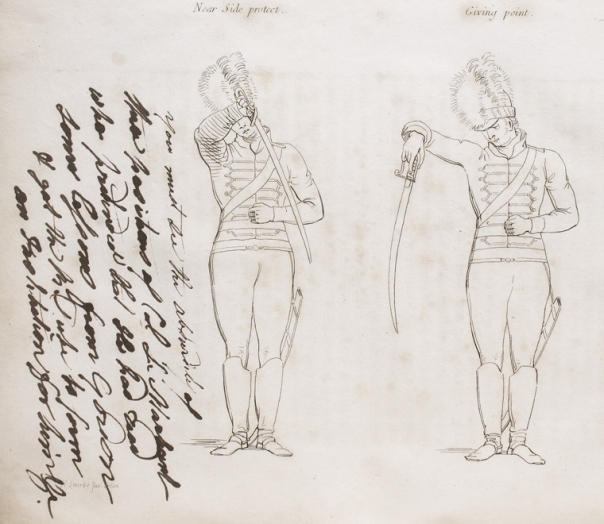









 The martial wisdom of Ireland’s swordsmen survives in Irish Swordsmanship: Fencing and Dueling in Eighteenth Century Ireland. The product of more than ten years of research, the first part of this book tells the story of eighteenth century Ireland’s most renowned duelists, gladiators, and fencing masters. The second part of this book contains the text of A Few Mathematical and Critical Remarks on the Sword—an almost completely overlooked fencing treatise, now published again for the first time in more than 230 years, that is currently the only known original treatment of swordsmanship by an Irish author published in Ireland during the eighteenth century. The Irish pike exercise has also been included among the book’s many appendices. “Irish Swordsmanship” contains extensive footnotes, more than sixty drawings, paintings, and engravings from the period, a comprehensive glossary of terms, and seven appendices.
The martial wisdom of Ireland’s swordsmen survives in Irish Swordsmanship: Fencing and Dueling in Eighteenth Century Ireland. The product of more than ten years of research, the first part of this book tells the story of eighteenth century Ireland’s most renowned duelists, gladiators, and fencing masters. The second part of this book contains the text of A Few Mathematical and Critical Remarks on the Sword—an almost completely overlooked fencing treatise, now published again for the first time in more than 230 years, that is currently the only known original treatment of swordsmanship by an Irish author published in Ireland during the eighteenth century. The Irish pike exercise has also been included among the book’s many appendices. “Irish Swordsmanship” contains extensive footnotes, more than sixty drawings, paintings, and engravings from the period, a comprehensive glossary of terms, and seven appendices.













































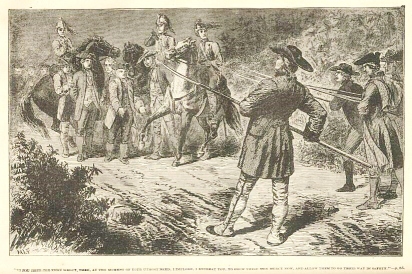





















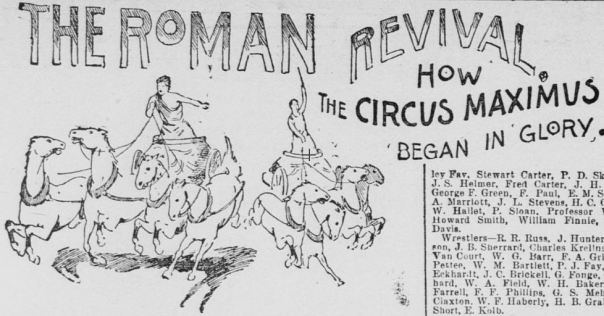
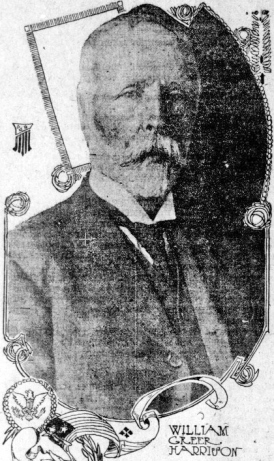
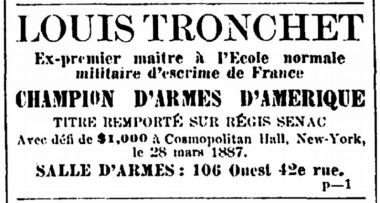
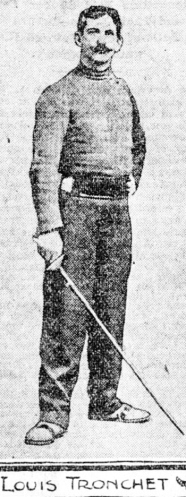
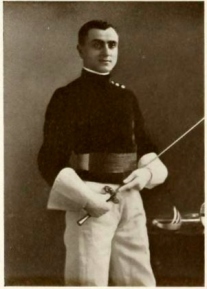
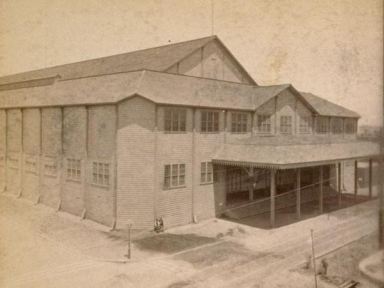
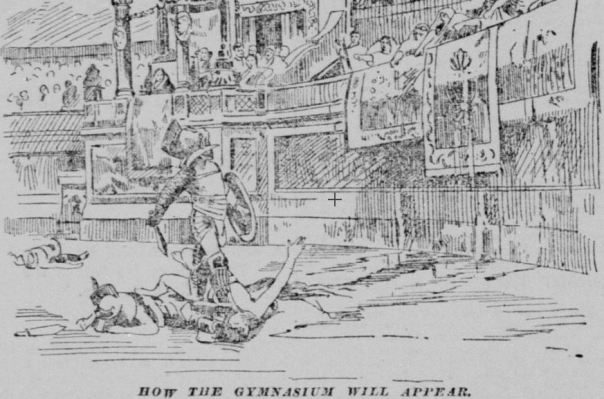
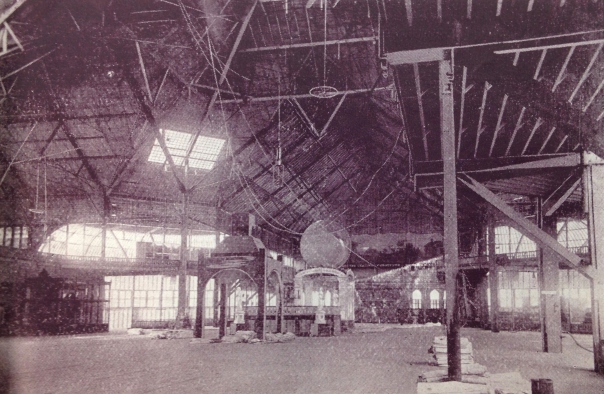
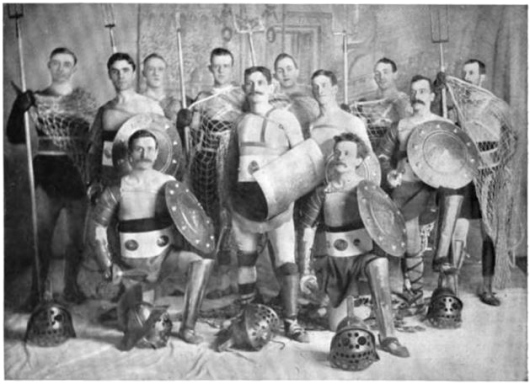
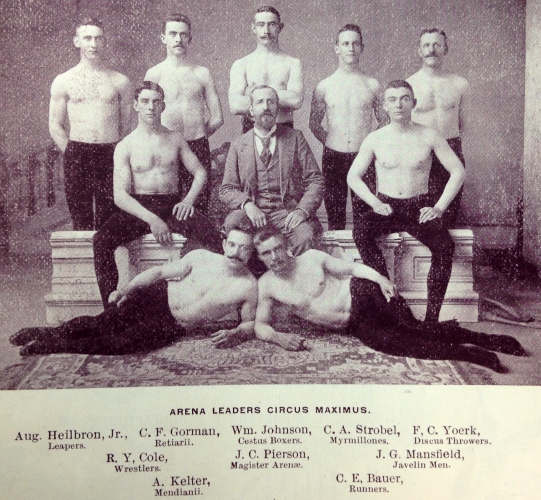
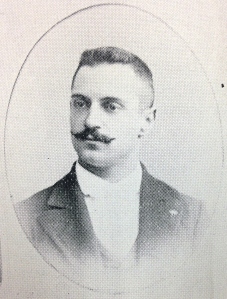
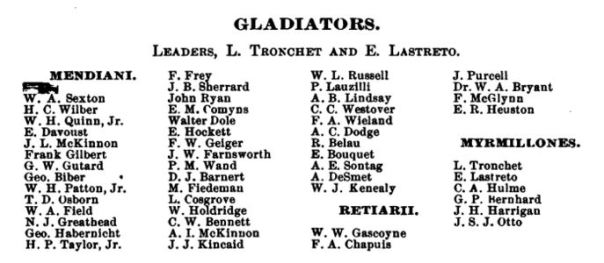
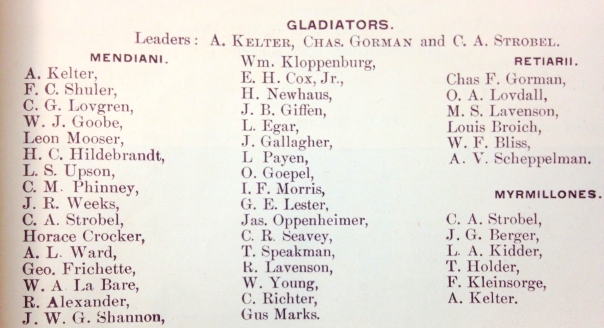
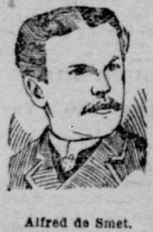
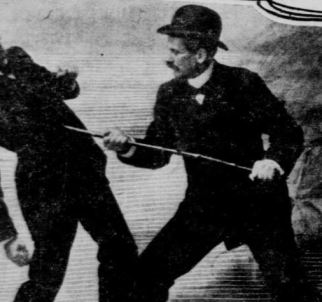

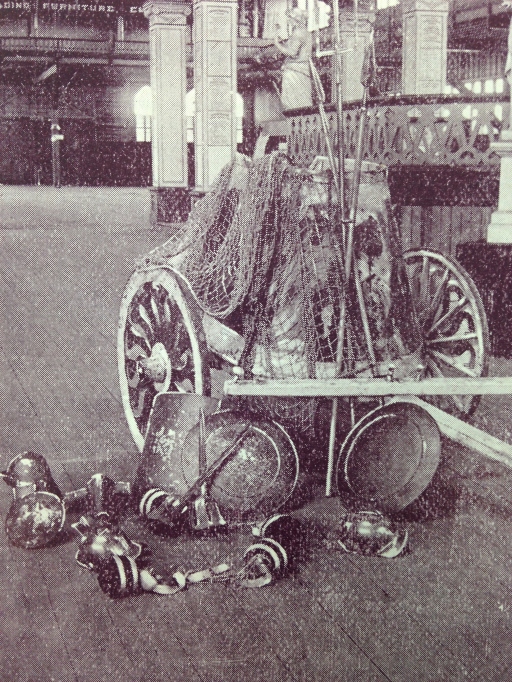
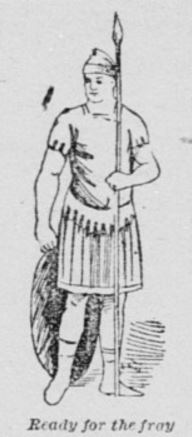
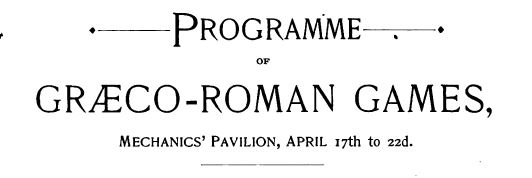
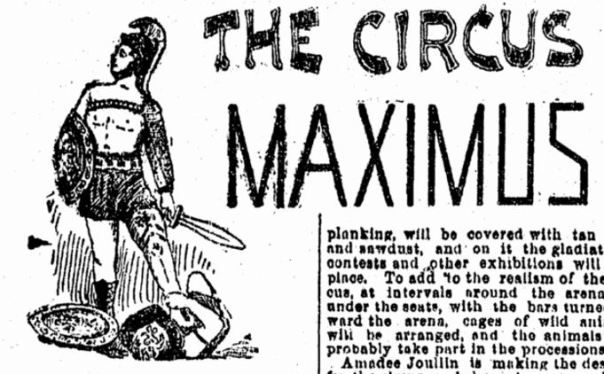
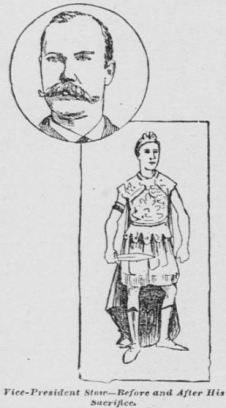
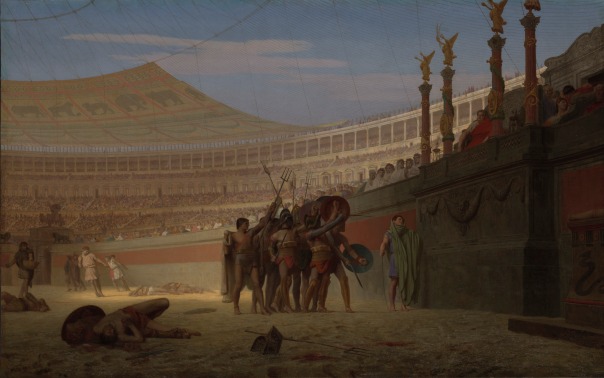
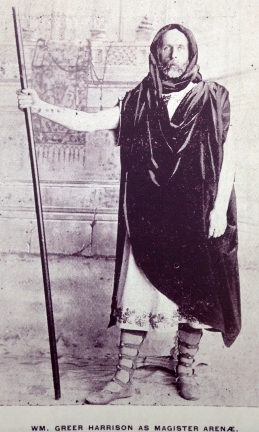

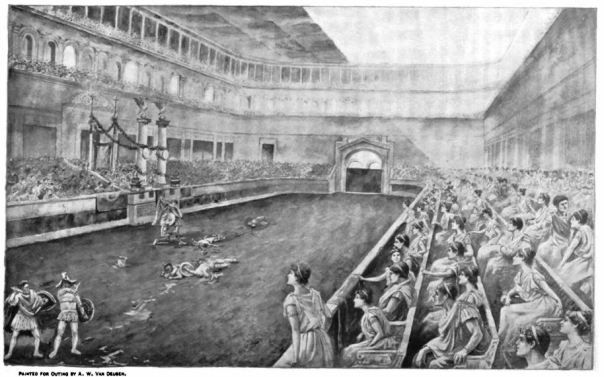
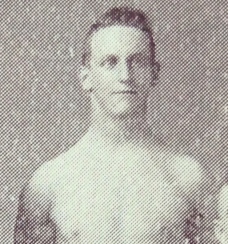
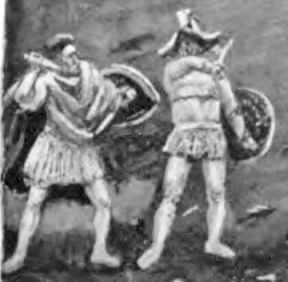
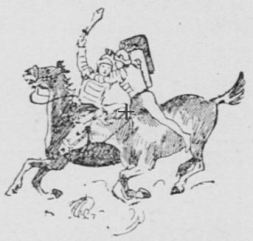
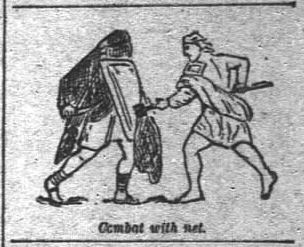
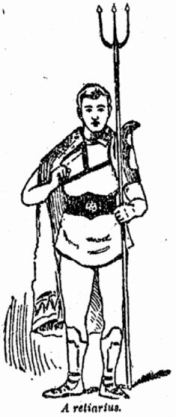
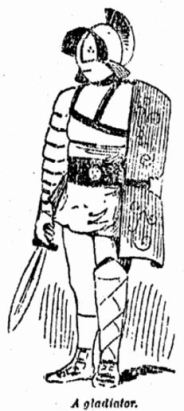
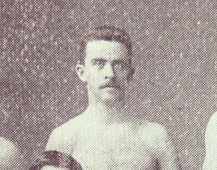
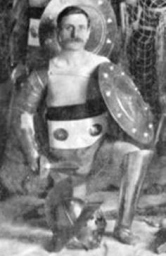
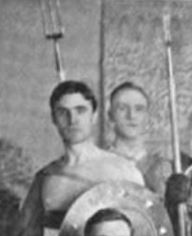
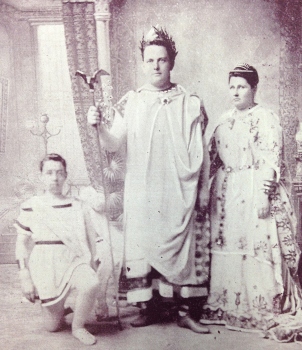
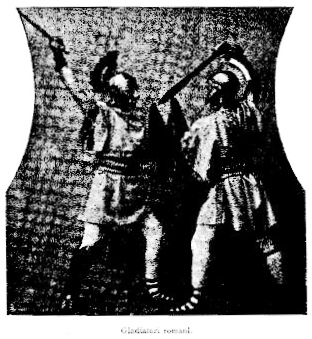
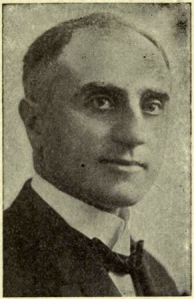
















 During the 1870s, Colonel Monstery, himself a veteran of dozens of duels, observed such a trend in the American fencing world, in which contestants emphasized offense over defense in the attempt to “score a hit.” Monstery derisively referred to such contests as “poker games”—that is to say, “jabbing with the blade” formed the chief method of attack, while the defense was ignored. [29] Such tactics often resulted in double or simultaneous hits to the two combatants. Monstery publicly warned that if such practices were to persist, “it is only a matter of time for [fencers] to become proficient in this sort of cheating, and to ruin the art of fencing in the United States for ever.” He explained,
During the 1870s, Colonel Monstery, himself a veteran of dozens of duels, observed such a trend in the American fencing world, in which contestants emphasized offense over defense in the attempt to “score a hit.” Monstery derisively referred to such contests as “poker games”—that is to say, “jabbing with the blade” formed the chief method of attack, while the defense was ignored. [29] Such tactics often resulted in double or simultaneous hits to the two combatants. Monstery publicly warned that if such practices were to persist, “it is only a matter of time for [fencers] to become proficient in this sort of cheating, and to ruin the art of fencing in the United States for ever.” He explained,



 “I wish it to be universally understood, that I recommend the practice of Sparring, as if in real action. No manoeuvres, no attitudes ought to be adopted, unless experimentally, but what would be introduced in an actual fight.” [39]
“I wish it to be universally understood, that I recommend the practice of Sparring, as if in real action. No manoeuvres, no attitudes ought to be adopted, unless experimentally, but what would be introduced in an actual fight.” [39]




 Tesshu would go on to found the renowned Itto Shoden Muto Ryu school of swordsmanship –which he regarded not so much as a new creation, but rather as a “restoration” of old martial principles. His system was informed by fudo-shin, the “imperturbable mind” developed in the course of Zen training. In a letter about the martial arts, written in 1883, Tesshu elucidates on the profound concept of “substance,” which he defines as “the inner quiet of mind, free from individual failings.” Tesshu advises,
Tesshu would go on to found the renowned Itto Shoden Muto Ryu school of swordsmanship –which he regarded not so much as a new creation, but rather as a “restoration” of old martial principles. His system was informed by fudo-shin, the “imperturbable mind” developed in the course of Zen training. In a letter about the martial arts, written in 1883, Tesshu elucidates on the profound concept of “substance,” which he defines as “the inner quiet of mind, free from individual failings.” Tesshu advises,







